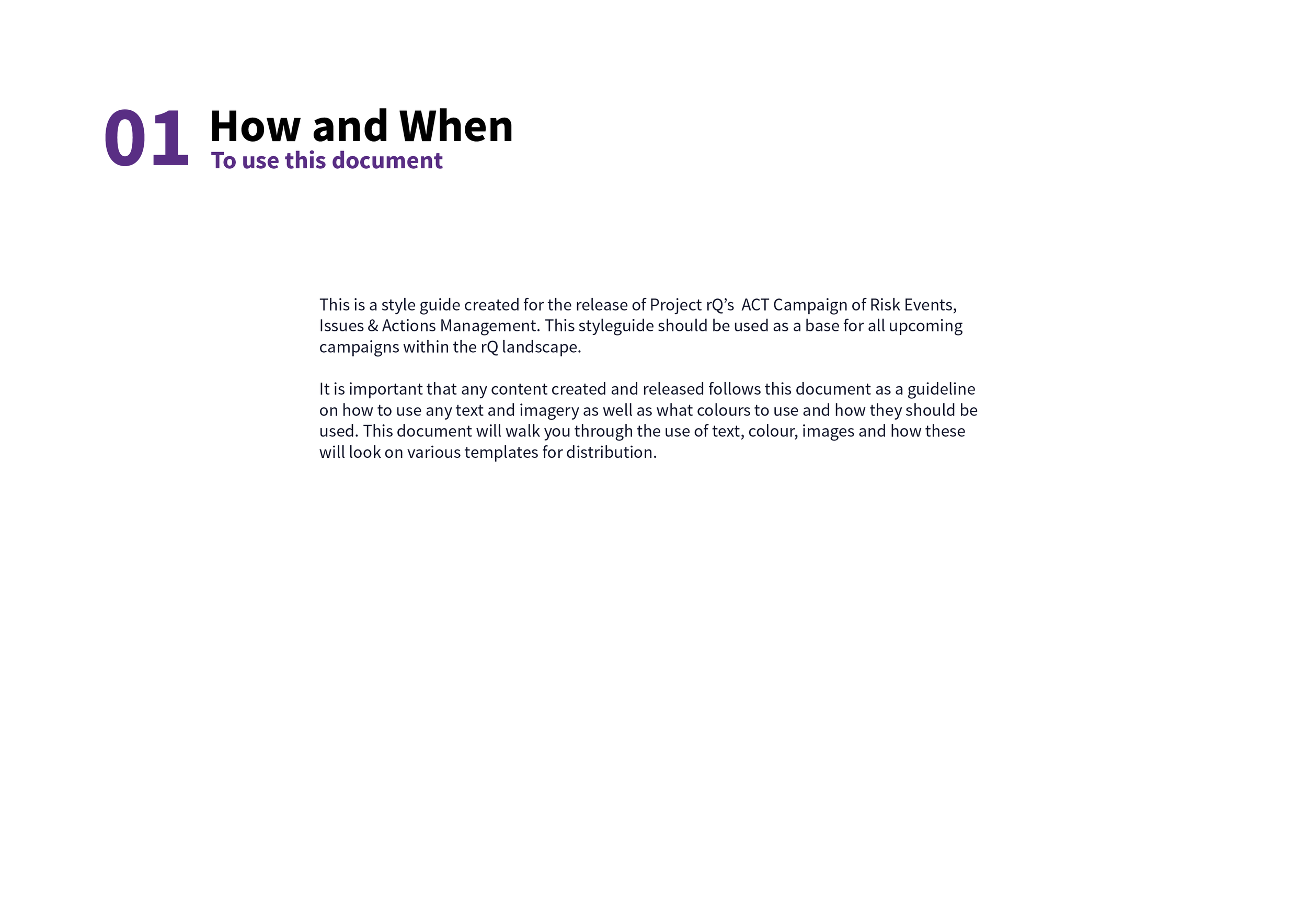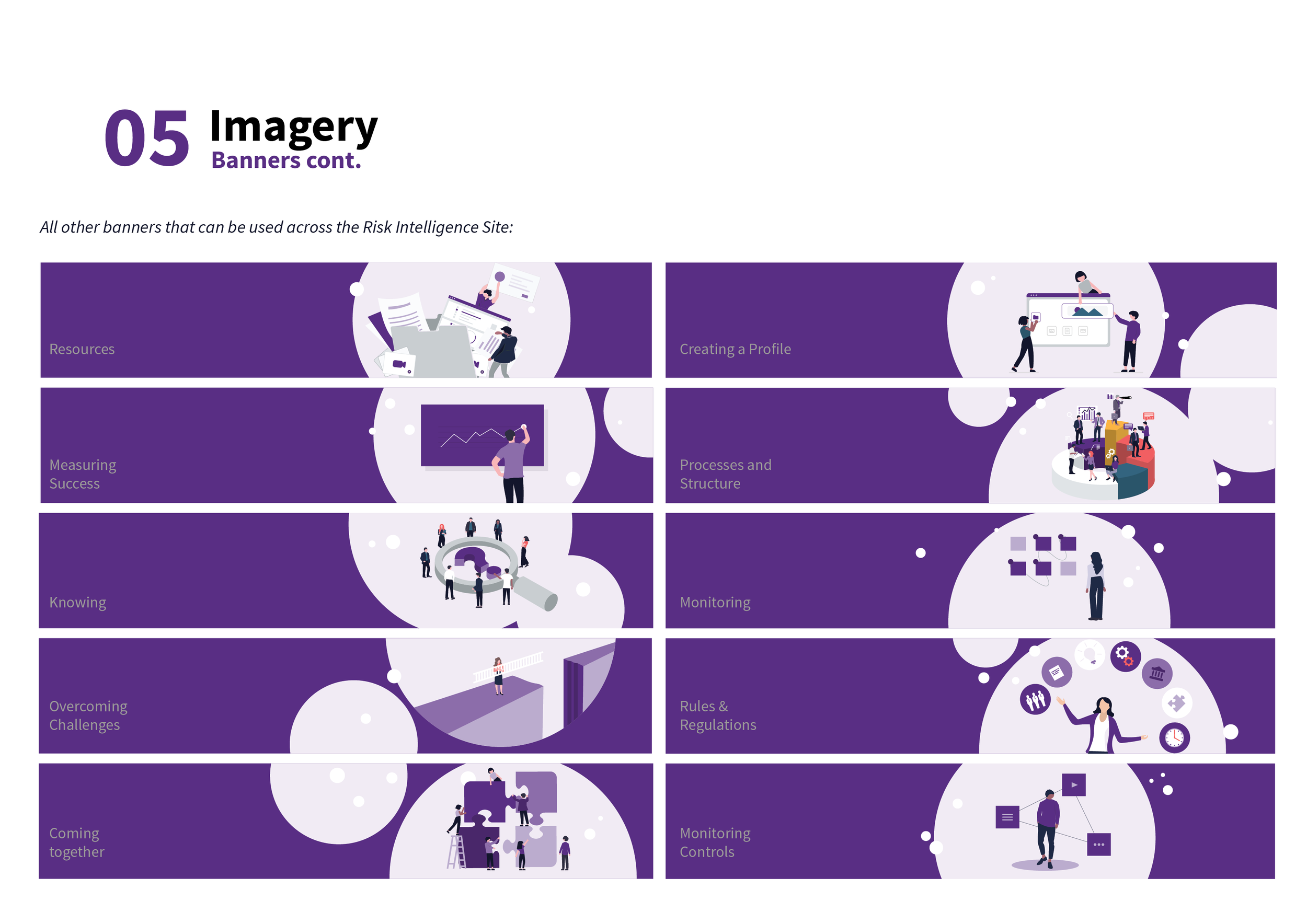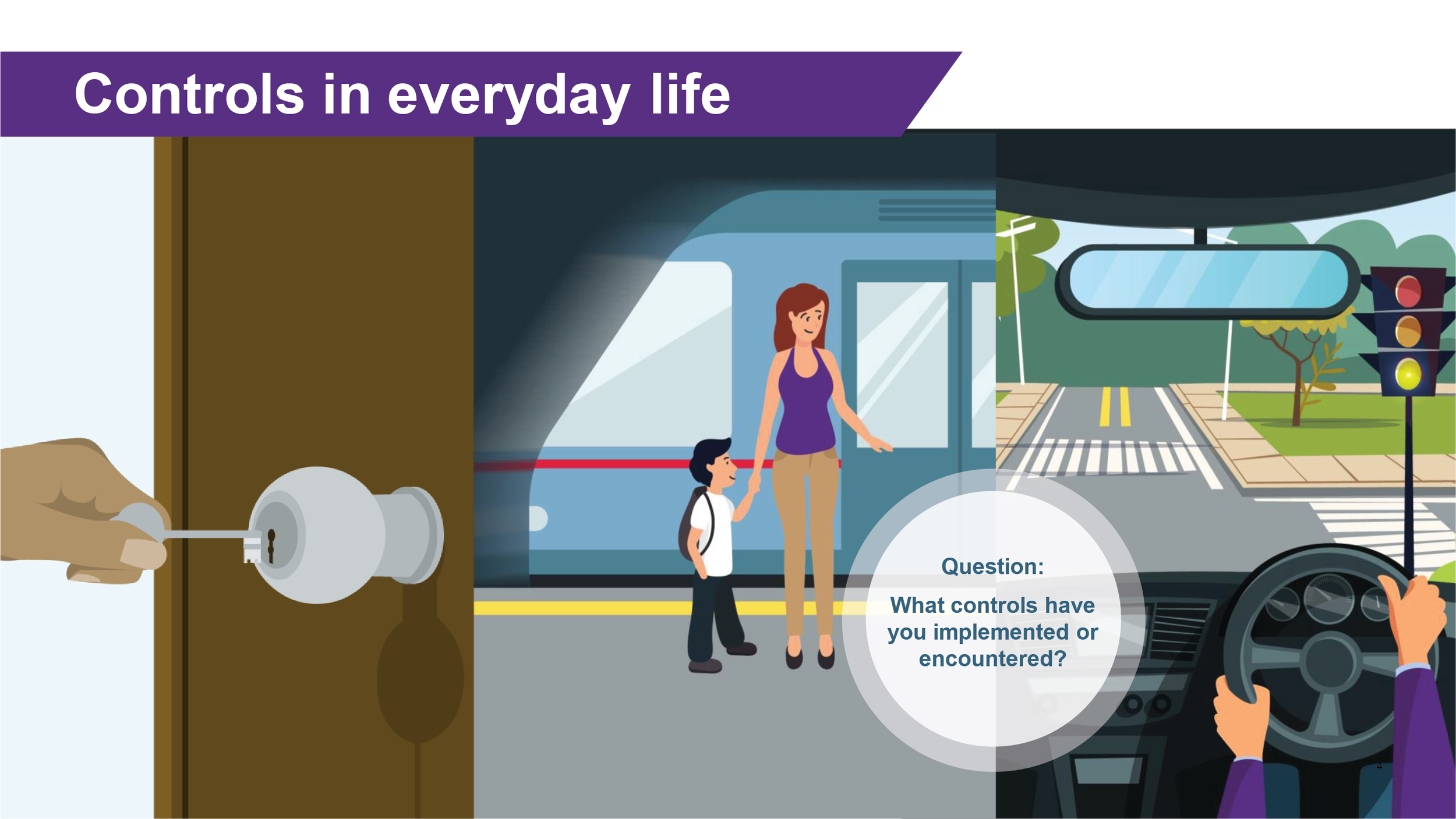rQ Academy (IAG)Introducing risk education modules to IAG
Over the course of my time at IAG, my teams main focus has been to create learning and development products and materials to shift the Risk maturity for all staff across IAG, as a response to the Royal Commission pointing out that there wasn’t a clear understanding of Risk Management company wide.
The rQ Academy was designed to create and facilitate learning workshops that over time would shift from being group facilitation to an online learn at your own pace style.
I was brought into the team as a Digital Designer, working closely with Subject Matter Experts (SME’s), Product Owners (PO’s) and Instructional Designers to create digital assets that act as learning tools for a range of Risk Topics.
Adding illustrations to facilitator-run training
After running many sessions, the facilitators felt that the slideshow packs that were created originally, were hard to relate to and understand. We were encouraged to explore and identify a visual style that could represent the concept of ‘risk intelligence’ at IAG, that could be used to refine the workshop packs and any future communications on the topic. I was able to add value to these workshops by embedding visual scenes that supported the case studies and explanations used by the facilitators. I had to adjust the scenes depending on whether the workshop was being run for Australia or New Zealand as their case studies were customised to be relevant and relatable for each country. The reason for replacing stock images with graphic illustrations is so that the images can be customised to clearly portray the different scenarios narrated by the facilitators.
Changing the way we create educational content
With ‘risk management’ being a challenging concept to make exciting, but an essential topic of training for all IAG staff, we decided to create engaging artefacts that contained visual narratives of how to identify risks and the appropriate steps to follow when it comes to risk management.
In order to identify the direction of the artefacts’ appearances and characteristics, I put together a style guide to help capture the essence of what me and the team wanted to convey when creating content about the various risk topics.
These artefacts would then be stored in IAG’s intranet on Sharepoint. Even though it has limited design capabilities, I decided to create a ‘Risk Intelligence Hub” that followed the same sort of design guidelines so that when IAG staff needed to refresh their knowledge or learn about risk, they knew they had accessed content created by the rQ Academy.
It took some time for the Communications team to get SME’s and PO’s onboard to publish the site as they weren’t sure how their content would be shared. For us, our main goal was to create a platform that made Risk topics clear and easy to understand for anyone in the business. We pushed hard to convince them what the benefits were of having a site like this and eventually they agreed.
Wireframe exploration: creating the rQ Academy,
IAG’s Risk Intelligence hub





My role in changing the way Risk is taught
I was focussed on generating a consistent look and feel for the site, while almost creating a brand for what Risk Management could be, while sticking closely to the company brand guidelines. One of the main decisions I made from a design stand point was not to use stock images to explain certain topics, as it was extremely difficult to find images that worked together visually that supported the text. Instead I created illustrations to directly represent topics being shared. This helped define the look and feel of the site. Each page has a custom banner that portrays the topic of content. Any accompanied graphics elsewhere then follows the same style.
Brand guidelines for content created under the rQ Academy



























Examples of digital illustrations drawn for training modules



















































Examples of facilitated training modules
How infographics were used to to shift concepts
from legal documents into storytelling tools
Collaborating with the instructional designers in my team, SME’s and PO’s across Group Risk, I created a range of infographics to be housed on the Risk Intelligence SharePoint Site. The reason for creating these are so that people across IAG can easily access these as Tools and Guides and learn at a pace that is convenient for them.
These infographics range from simplifying content from Standards and Guidance documents, to explaining certain role guides. It took some time to define a visual identify of how these infographics look and feel. They started off extremely detailed and over many iterations, I managed to refine them in a way that closely resembled the new IAG Brand Guidelines, while still giving them a unique appearance that would be associated with the rQ Academy.
The first lot of infographics were created as a potential communications piece that would be sent out via emailed newsletters when new topics of Risk were to be released to the wider company. These examples and scenarios were created so that everyone could relate to the concept in some way, as all the divisions would need different case studies to understand Risk Management in their workplace.
Unfortunately because these weren’t business related case studies and examples, we were unable to go ahead with releasing them, however it did reveal to the SME’s how powerful the correct imagery can be when explaining scenarios.


















































































